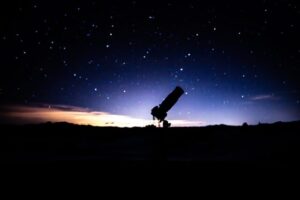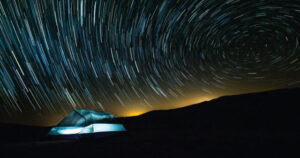An illustration of the orbits of the new and previously known extremely distant Solar System objects. The clustering of most of their orbits indicates that they are likely be influenced by something massive and very distant, the proposed Planet...
NASA's Juno mission successfully executed its first of 36 orbital flybys of Jupiter today. The time of closest approach with the gas-giant world was 6:44 a.m. PDT (9:44 a.m. EDT, 13:44 UTC) when Juno passed about 2,600 miles (4,200...
We know that the universe is roughly 14 billion years old, and that someday it is likely to end -- perhaps because of a Big Freeze, Big Rip or Big Crunch.
But what can we learn by considering our own...
This dual view of Jupiter was taken on August 23, when NASA's Juno spacecraft was 2.8 million miles (4.4 million kilometers) from the gas giant planet on the inbound leg of its initial 53.5-day capture orbit. Image credit: NASA/JPL-Caltech/SwRI/MSSS
This...
The dark galaxy Dragonfly 44. The image on the left is from the Sloan Digital Sky Survey. Only a faint smudge is visible. The image on the right is a long exposure with the Gemini telescope, revealing a large,...
Artist impression of a debris disk surrounding a star in the Scorpius-Centaurus Association. ALMA discovered that -- contrary to expectations -- the more massive stars in this region retain considerable stores of carbon monoxide gas. This finding could offer...
Johns Hopkins astrophysicists argue fast radio bursts could provide clues to dark matter. (Credit: Alain r/Wikimedia Commons)
Astrophysicists from Johns Hopkins University have proposed a clever new way of shedding light on the mysterious dark matter believed to make up...
Up-close views from the Voyagers, like this one from Voyager 2, showed Saturn and its rings as never before.Credit: NASA/JPL-Caltech
Saturn, with its alluring rings and numerous moons, has long fascinated stargazers and scientists. After an initial flyby of Pioneer...
This artist's impression shows a view of the surface of the planet Proxima b orbiting the red dwarf star Proxima Centauri, the closest star to the Solar System. The double star Alpha Centauri AB also appears in the image...
Perspective view of Aram Dorsum, an inverted channel on Mars and candidate landing site for the ExoMars rover. Credit: NASA/JPL/MSSS
Extensive systems of fossilised riverbeds have been discovered on an ancient region of the Martian surface, supporting the idea that...
Artist's impression of the disc and outflow around the massive young star. Credit: A. Smith, Institute of Astronomy, Cambridge.
A young star over 30 times more massive than the Sun could help us understand how the most extreme stars in...























